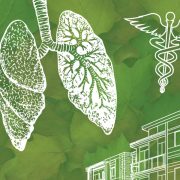Nine out of ten breaths are taken indoors. It’s time we see efficient buildings as a key component to human health. Our children’s health and lives literally depend on it.
written by Mary A English
What is the first piece of technology that pops into your head when you think of energy efficient buildings? Is it solar panels on the roof? That is a common answer.
Solar panels can be a freeing option for consumers that need a little more room in a tight household budget or want to make clean power, but solar panels do not make for energy efficiency per se. Solar panels provide energy generation. Efficiency is another word for conservation, which is the practice of making a building use less energy. Indeed, the cleanest energy is energy that we never use. There’s a lot of never-used energy involved when a building performs well.
Since joining the building performance industry in the mid-aughts – roughly sixteen years ago – I have seen firsthand how inefficient building features can lead to many painful problems in both residential and commercial buildings. Efficient building features, however, always seemed to lead to improvements in the lives of people who regularly used those buildings. One example of an energy efficient building feature is air sealing, which reduces drafts and heat loss by eliminating air leaks in the building around the chimney, plumbing penetrations, and recessed lights.
The Impact of Inefficient Building Features
Through the years, it became increasingly evident to me that building conditions are not the same across all areas of our metro. I realized that the benefits of energy efficiency need to reach a broader audience. But making that happen presented a challenge.
For building performance professionals there are four benefits of energy conservation that we can recite in our sleep: affordability, durability, comfort, and health. Comfort is usually the reason an energy professional is called by a homeowner to help. (Do you have a bedroom over your garage that is constantly hot in the summer; and cold in the winter, for example?) Affordability means that the cost of energy efficient upgrades can only be a reality for some customers. While all four benefits are important, it is the last one—health—that is most critical, yet services are not always achievable for those who desperately need that benefit.
The importance of energy upgrades for health is shown time and again, as more studies are done on the intersectionality of human health and building efficiency. With each study it is becoming clearer that our inefficient buildings may be the cause of much that physically ails humans—especially children.
A Case Study: The Link Between Weatherization and Childhood Asthma
One of these studies was published this summer by MEC in cooperation with Kansas City’s own Children’s Mercy Hospital (CMH) and the University of Missouri – Kansas City (UMKC).[1] The results of the study indicate that weatherizing a home improves the health of children living in that home. Possible reasons could be that breathability of outdoor air matters, especially when that air comes inside, or that mold grows more commonly when outside air meets the air conditioned inside. Either way, something causes improvements in childhood asthma when a home is weatherized.
The research team used data from the wave of weatherization work MEC managed after passage of The Recovery Act in 2009. Most of the weatherization work done involved air sealing, insulation of the basement’s rim joist, and other energy efficiency improvements such as sealing around windows and doors (Wilson et al. 2023). During data analysis, CMH protected the personal identities of children and families, and economists from UMKC merged the MEC weatherization data with CMH childhood asthma data from the same homes to see if there was a significant link that changed the number of cases of childhood asthma in weatherized homes.
Then the research team compared that with a control group of homes constructed in all eras, even past 1983 (Wilson et al. 2023). This detail is a sign of good study design because most people think that homes built after 1983 complied with modern codes and were more energy efficient, but for most of our region’s municipalities, this is an incorrect assumption. The combined dataset was made up of single-family homes within Kansas City, MO city limits.
The strong correlation revealed in the results of this study turned out to be stunningly significant. The team’s analysis found that the weatherization program “reduced the frequency of pediatric asthma encounters for those children diagnosed with asthma residing in homes that received energy efficiency improvements” (Wilson et al. 2023). The difference between the weatherized set of homes and the control group where no weatherization was executed was a 34% reduction in hospital visits for asthma.
For building performance professionals who work in the field on existing buildings, this may not be surprising. Mold in energy deficient areas of buildings is not uncommon, for example. However, the significance of that statistic—the 34% of children who suffered less because of the energy efficiency upgrades—exceeded expectations for yours truly.
Implications for Policy and Codes
What do we do with this information? Well, first, good science means that this study will need further review. We have a strong correlation of reduced frequency and intensity of asthma attacks after weatherization, but more digging will need to be done by scientific peers to corroborate; and then to determine causation. Is the improved health because better insulation and air sealing keeps out poor outdoor air, like ozone? Or is it because it cuts down on condensation points (which can grow mold if undetected) that can occur when extreme weather seeps into buildings with conditioned air? We need answers. We at MEC hope this leads to further study.
In the meantime, however, this study supports those that advocate for better energy efficiency in our built environment. Policymakers can be assured that any improved codes policy—such as the passage of the 2021 International Energy Conservation Code (IECC) in Kansas City, MO—is justified. And bonus! The timing of this report publication dovetails nicely with the rebates available to weatherize homes through the Inflation Reduction Act (IRA). It is up to those of us in the industry to guide consumers towards best practices as our region updates its buildings.
Addressing Renters and Existing Buildings
This is true especially when you know that roughly half of our residents in the entire metro are renters. A common counter from those opposed to more robust energy efficiency laws has been that only a few people want it, and those people can pay for energy efficiency in their new homes. Contrasting against that sentiment, this report begs a new question. Are renting families who have zero power over the energy features of their home to be left out of affordability, durability, comfort, and health?
And what about the home buyer that assumes the law protects them from inadequate construction practices across the country? The data shows that the codes followed in the era when the residential structure was built had no discernible effect on the impact of weatherization on asthma cases. Unfortunately, codes have not protected citizens in all cases. However, the evident strong correlation in this study made it clear: weatherization means fewer severe asthma attacks and generally less intense asthma incidents.
In Kansas City, MO, we are on the right track with a robust energy code passed in 2022 to protect consumers, at last, for new home construction. We now need to apply what we have learned in the existing buildings market. Training contractors on energy efficiency’s human impacts should be an industry priority. (We at MEC hope that other municipalities in our metro follow the City of KCMO’s lead as well.)
In summary, better energy efficiency leads to better health in the home. What, as a society, are we going to do now that we know? Do we ask car buyers to pay extra for seatbelts? No, they are mandatory because they protect the passengers. We shouldn’t ask residents to pay extra for healthy lives brought about through energy efficient buildings.
[1] Wilson N, Aloumon C, Tauheed L, Kennedy K. 2023. The Impact of a Weatherization Program on the Health Outcomes for Children with Asthma. Metropolitan Energy Center. [accessed October 23, 2023]; https://metroenergy.org/wp-content/uploads/2023/07/Health-Impacts-of-EWKC-Program-Activities.pdf









